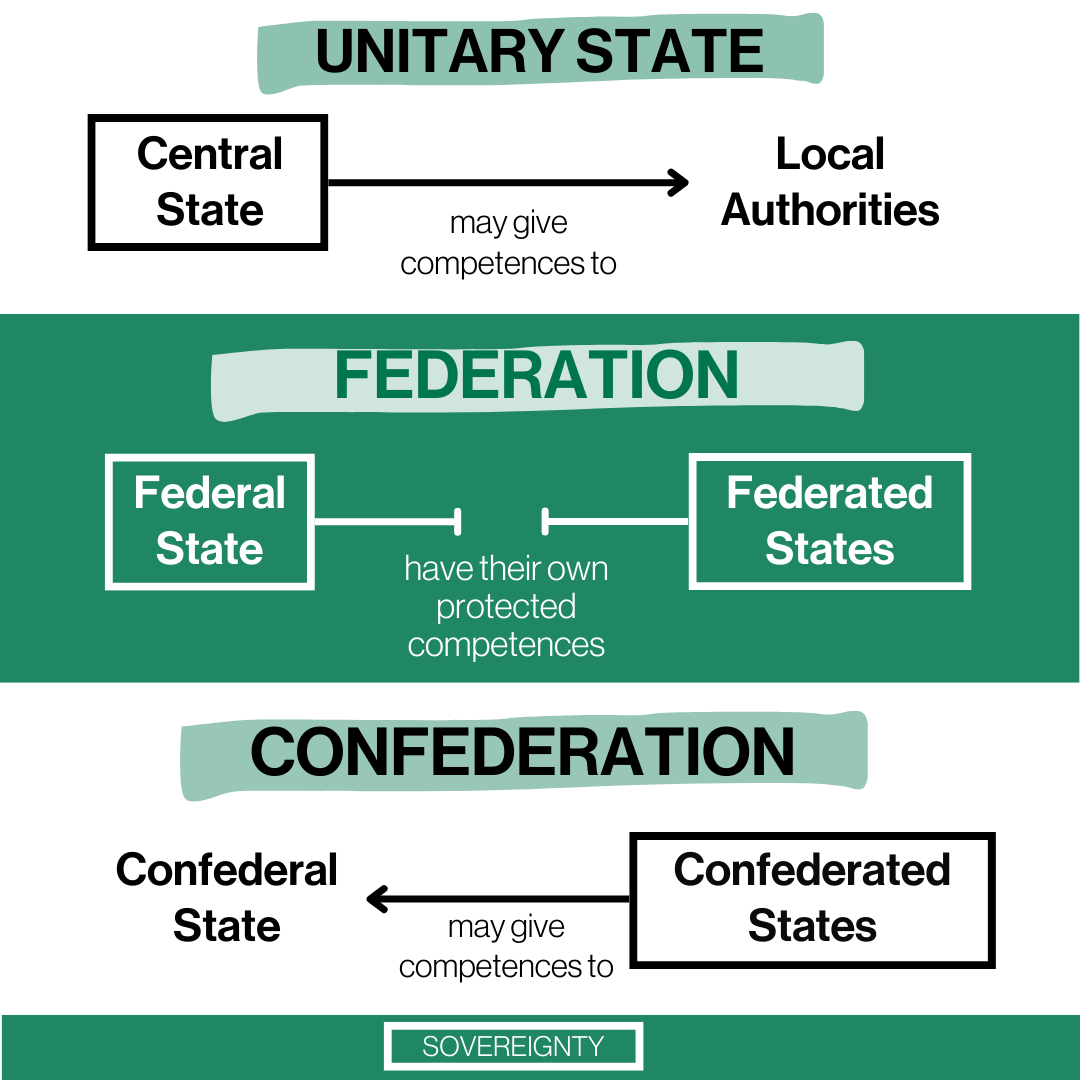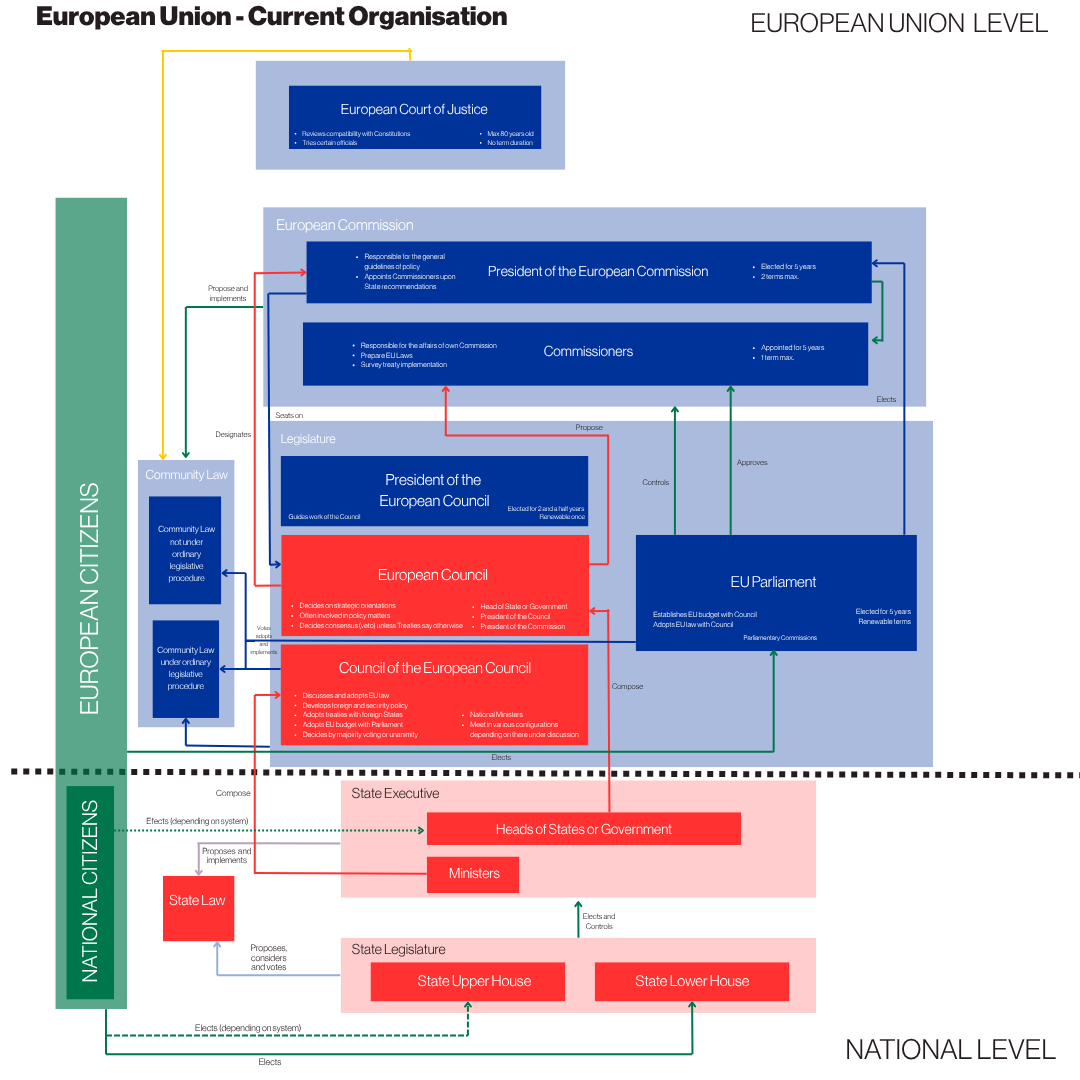TOWARDS THE
UNITED STATES OF EUROPE
UNITED STATES OF EUROPE
Since 1946 fighting for a
European Federation
European Federation
The Union of European Federalists is a supranational, non-governmental political organization of women and men who are committed to the struggle for a European Federation, intended as the fundamental first step along the road towards world federation.
TOWARDS THE
UNITED STATES OF EUROPE
UNITED STATES OF EUROPE
Since 1946 fighting for a
European Federation
European Federation
The Union of European Federalists is a supranational, non-governmental political organization of women and men who are committed to the struggle for a European Federation, intended as the fundamental first step along the road towards world federation.
The road ahead is not easy, nor safe.
But it must be pursued, and it will be!

UNITARY STATES, CONFEDERATIONS AND FEDERATIONS
Institutions are the architecture of a political system. They define the roles that each actor plays, as well as the interactions between them. Upon these institutions rests the democracy, transparency and efficiency of the political system.
The difference between unitary States, confederations and federations lies in who holds the power, between the various levels of government.
- In unitary States (like France or Italy), the central (or national) government holds the ultimate sovereignty. It may decide to transfer part of its competences to lower-level authorities (local or regional), through a process of decentralisation. But it may just as well take these competences back unilaterally.
- In confederations (as Organization of the United States under the Articles of Confederation, here a list of examples), confederated States hold the ultimate sovereignty. They jointly decide to transfer part of their competences to higher-level authorities (the confederal State). But they may just as well decide to take these competences back unilaterally.
- In federations (like USA and Switzerland), the federal State and federated States both hold separate sovereignty. The division of competences and the separation of powers are usually delineated in the constitution and neither the federal government nor the federated States can unilaterally alter the constitution or the competences of the other.
What is Federalism? Discover here
It's not tyranny we desire; it's a just, limited, federal government.

WHAT IS THE EUREPEAN UNION? IS IT MORE SIMILAR TO A FEDERATION OR A CONFEDERATION?
The European Union, which is an international organization, has some characteristics of a confederation, but not all of them. On the other hand, it has some characteristics of a federation. While there are common institutions, such as the European Parliament, the European Commission, the EU Court of Justice, and the ECB, which are typically federal in nature (since they act in the interests of the Union and do not take directives from the states), as well as more strictly confederal institutions such as the European Council and the Council of the EU (in which the states are the protagonists), on the other hand, some aspects are missing, such as a common currency among all EU member states or a single foreign and defense policy. In practice, the EU can be considered a hybrid entity, halfway between a confederation and a federation.
No taxation without representation. Well, today in Europe we can say no representation without taxation. In order for the representative of the European Union sitting in Strasbourg to be really representative, they should have the power to tax us.

EUROPEAN FEDERATION: THE FINAL STEP IN A LONG PATH OF INTEGRATION
The Union of European Federalists “works for the creation of a European Federation, endowed with supranational institutions with limited but real sovereign powers, consisting of: a Federal Government, a Parliament elected by direct universal suffrage, a Federal Senate representing Member States and possibly the Regions, a Court of Justice,” (art. 2 of the Statutes of UEF)
The European Federation is new institution and it is a political creation of a constitutional nature.
The European Union, as we know, it is an international organisation with supranational powers and competences, but it is not yet a sovereign power (it has no power over citizens and cannot act with policies like a normal State) and fully democratic (many EU powers are managed by national governments – as the Council of the EU and European Council - and not by democratically legitimised bodies).
The unity of Europe is the historic task of our generation.
FROM THE TRAGEDY OF THE SECOND WORLD WAR COMES THE IDEA OF A UNITED AND FEDERAL EUROPE
European Federalism seeks to overcome the absolute sovereignty of nation-states, promoting peace, democracy, and cooperation among the peoples of Europe.
This political idea become a priority during the Second Warld War, where groups emerged in various countries - particularly in Italy, France, Germany and Belgium – calling for European political unity.
They were united in the rejection of nationalism and in the belief that the only way to peace, democracy and a better future was for European states to unite in a European federation.
Altiero Spinelli, together with Ernesto Rossi and Eugenio Colorni, was one of the main founders of European federalism. While in confinement on the island of Ventotene in 1941, they drafted the 'Ventotene Manifesto', a document proposing the creation of a European federation as a means to ensure peace and prevent future wars.
After World War II, the Union of European Federalists was founded in Paris on December 15 and 16, 1946, with the belief that only a European Federation, based on the idea of unity in diversity, could overcome the division of the European continent that had caused the suffering and destruction of the two World Wars.
About the origin of the UEF. Discover here
Peace in Europe is the keystone of world peace. Indeed, in the space of a single generation, Europe has been the epicentre of two world conflicts that have stemmed, above all, from the existence, in this continent, of 30 sovereign states. The priority must be to put an end to this anarchy through the creation of a federal union of European peoples.
SINCE 1946 CAMPAIGNING FOR A EUROPEAN FEDERATION
UEF was officially brought into life with its function being to co-ordinate and intensify the activities of the different movements and to organize them into a federal structure. Since then UEF has been active at the European, national and local levels for the past 75 years.
UEF has been the first to campaign :
- for a Europe without national borders,
- the direct elections of the European Parliament,
- the European currency,
- a European Constitution.
Its demands have preceded their future achievements often by decades.
About our history and achievements. Discover here
Organised federalism does not use any of the weapons of power – the vote, representation of sectorial interests, violence –, with the exception of the indirect one of culture. And this is precisely why the federalists have the capacity to modify the power situation – and become a political force of initiative
TODAY A UNITED AND FEDERAL EUROPE IS A NECESSITY FOR ALL
The European Federation can only come into being by the will of the governments of the European states and with the consent of the European citizens.
So the UEF's political campaigns and activities are aimed at multiple actors:
- governments and parliaments of European states, and the European institutions (the institutional bodies that anticipate the future life of the European federation).
- citizens: both as individuals and in its organized forms: NGOs, trade unions, political parties etc..,
A united Europe was the dream of a few. It became the hope of many. Today, it is a necessity for all.
